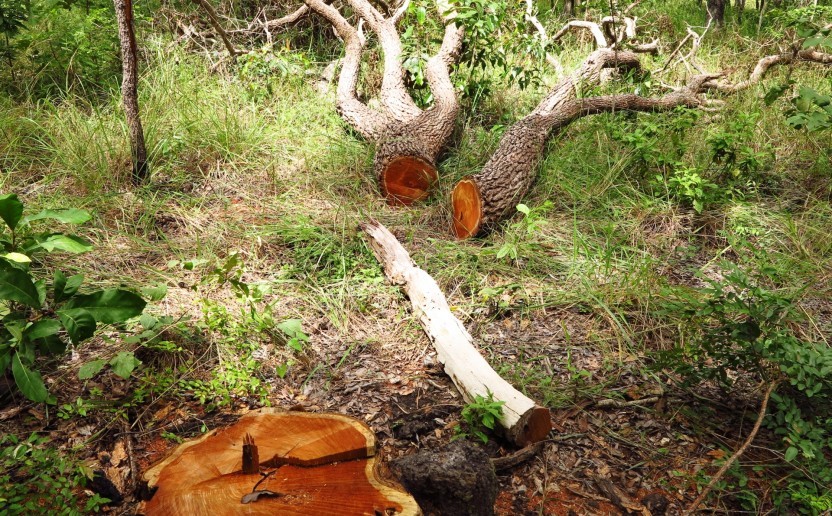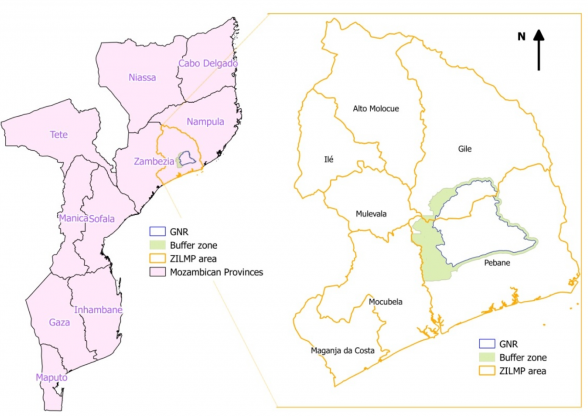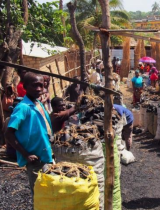ZILMP - Background study for the preparation of the Zambezia Integrated Landscapes Management Program
Partners
Main goals
The Zambezia Integrated Landscapes Management Program (ZILMP) is a jurisdictional program within a Mozambican REDD+ strategy framework. The ZILMP was presented to the Carbon Fund of the Forest Carbon Partnership Facility (FCPF CF) through an Emission Reduction Project Idea Note (ER-PIN), validated during the session of October 2015. The ZILMP has to do with the Zambezia province, concentrating 13% of the Mozambican forest cover (mainly Miombo forest) and it represents 8% of the deforestation national level : it is the 4th most affected region over 11 provinces. The ZILMP program is covering 7 districts (Alto-Molocué, Ile, Gilé, Pebane, Mulelava, Mocubela and Majanga da Costa) surrounding the Gilé National Reserve (GNR), where Nitidæ (Etc Terra) is already active. The forest cover to be considered is 1.9 millions ha, threatened by a rate of deforestation up to 0,70% per year between 2010 and 2013 (against 0.55% per year between 2000 and 2005).
Specific objectives
The ZILMP is largely based on a REDD + pilot project coordinated by the International Foundation for Wildlife Management (IGF) in the Gilé National Reserve (GNR) and its periphery. Thanks to this project, Nitidæ (Etc Terra) has acquired a good knowledge of the socio-economic and environmental dynamics of the region. In this context, the Government of Mozambique is now preparing an Emission Reduction Program Document (ER-PD) in order to be able to sell carbon credits to the FCPF-CF. He has mandated Nitidæ (Etc Terra) to carry out a background study in order to define a program compatible with the methodological framework of the FCPF-CF on all 7 districts concerned by the ZILMP.
Beneficiaries
This study should enable the Government of Mozambique to definitively validate its ZILMP with the FCPF-CF. It lays the foundations for actions to be carried out and institutional arrangements that need to be put in place in order to reduce deforestation and forest degradation in the concerned area and to allow a good implementation of the ZILMP.
This study gathers data (through surveys, field inventories, satellite images analysis, bibliography, etc.) to help design a REDD+ program that meets the requirements of the FCPF CF methodological framework.Therefore, Nitidæ is responsible for collecting all the data and proposing effective institutional options and arrangements for the implementation of this program.
In this framework, the forest cover to be considered is 1.984 millions ha, representing 51% of the 3.685 millions ha of the ZILMP area. It first provides various analyses so as to gain a global understanding of the socio-economic and environmental dynamics that characterize the ZILMP.
Results
R1. Analysis of historical deforestation. This section aims to map forest extent and deforestation in the ZILMP area over the 1990 – 2013 period on the basis of satellite images
R2. Analysis of carbon stocks and baseline emissions settings: quantify the carbon stocks in the Miombo forests of the ZILMP (field inventories); setting up an emissions baseline
R3. Analysis of the drivers of deforestation and forest degradation (surveys and field visits) : this section explains the reasons of deforestation and degradation in the zone, focusing especially on smallholders’ agriculture and charcoal production
R4. Analysis of risks of future deforestation : mapping of predicted future deforestation, based on historical deforestation and comprehension of the drivers of deforestation
Activities
A1. Options to reduce deforestation and forest degradation : this section sheds light on a whole set of potential options to reduce deforestation, studied and prioritized in order to design the content of the project. Geography of potential activities is also described
A2. Institutional arrangements for implementation : proposing key features for the institutional arrangements that will support the implementation of the program
A3. Provisional budget for the implementation of the ZILMP program
Related people
Marie Nourtier
PhD in Forest sciences conducted at INRA Avignon, EMMAH research lab, she brings her expertise in forest ecology, support for REDD+ mechanism and carbon accounting, Environmental and social impact assessment of projects, project management and supervision of technical work
See moreClovis Grinand
PhD in Functional Ecology and Agronomic Sciences (SupAgro, IRD and CIRAD) and specialized in Localized Information Systems for Spatial Planning (AgroParisTech), he is an expert in land use change monitoring using remote sensing, digital soil mapping and spatial modeling applied to forestry, agronomy and landscape ecology. He is the author of numerous international scientific publications.
See moreCédric Rabany
Holder of a Master of Science, "Agricultural Engineer and territories development" from the Institut Supérieur d’Agriculture (ISARA Lyon), he brings his expertise in agro-food/agricultural sectors' analysis and development, strengthening of supplychain actors (producers, private/public actors, agro-food industries...), socio-economic analysis of agricultural chains and his great knowledge of companies in these markets
See moreRN Gilé - Pilot project to mitigate def…






